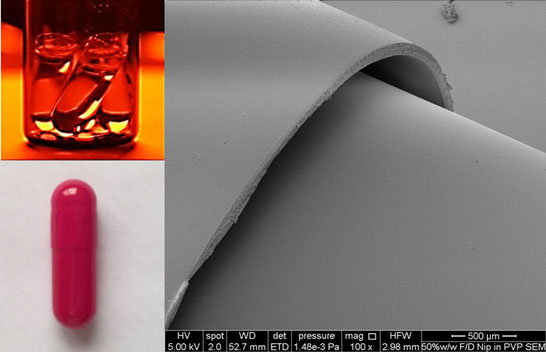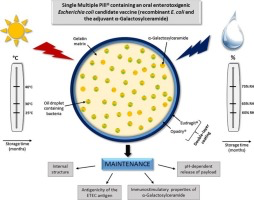- Home
- Blog
- News
- Basics
- Sources
- Agencies, Regulatory & Organisations
- CERSI Excipients Browser
- Excipient Report
- Excipient DMF List
- EXCiPACT Certified Companies
- Excipient Documentation
- Excipient EINECS Numbers
- Excipient E-Numbers
- FDA Inactive Ingredient List
- FDA GRAS Substances (SCOGS) Database
- IPEC Americas
- USP - U.S. Pharmacopeia
- Definitions
- Whitepapers / Publications
- Supplier
- Services
- Media
- Events
- 1st pharmaexcipients Poster Award
- Event Calendar
- Events featured by pharma-excipients
- 4th Annual Formulation & Drug Delivery Congress
- DDF Summit
- ExcipientFest Americas
- ExcipientFest Asia
- Global CompliancePanel
- International Conference and Exhibition on Pharmaceutics & Novel Drug Delivery Systems
- Formulation & Drug Delivery USA Congress
- Laboratory Medicine 2018
- Making Pharmaceuticals Europe
- Making Pharmaceuticals Exhibition
- Pharma Integrates
- PharmaExcipients China @CPhI China
- TTC Technology Training Center
- Jobs
- Online Sourcing
- Contact
05. April 2018
Fused deposition modeling 3D printing (3DP) has a potential to change how we envision manufacturing in the pharmaceutical industry. A more common utilization for FDM is to build upon existing hot melt extrusion technology where the drug is dispersed in the polymer matrix. However, reliable manufacturing of drug-containing FDM filaments remains a challenge along with the limitation of active ingredients which can sustain the processing risks involved in the HME process. To circumvent this...
16. February 2018
A common obstacle encountered in the early stages of drug development is the formulation of poorly water-soluble drugs (PWSDs). One effective approach to improve the dissolution of PWSDs is to render such drugs into their amorphous or disordered form.
16. January 2018
Nowadays, the pharmaceutical industry is facing an increasing numbers of low solubility drug candidates and this issue o en hinders those compounds from achieving su cient oral bioavailability. In order to alleviate this challenge, many enabling formulation technologies have been developed. Of these, liquid- lled capsules have emerged as one of the key technologies for oral drug delivery of low solubility compounds.
11. January 2018
Researchers have developed a capsule that can deliver a week’s worth of HIV drugs in a single dose. This advance could make it much easier for patients to adhere to the strict schedule of dosing required for the drug cocktails used to fight the virus, the researchers say.
09. November 2017
Oral-solid dosage (OSD) drugs can be formulated in tablet or capsule form. Some drugs are available only as capsules or tablets, and some are available as both. Various types of capsules, with shells made of different materials, are available. When choosing a capsule type, formulators should consider factors such as the shell’s barrier to water and oxygen, reactivity, and the material it is made of.
23. October 2017
The compliance of patients to solid oral dosage forms is heavily conditioned by the perceived ease of swallowing, especially in geriatric and pediatric populations. This study proposes a method, based on an in vitro model of the human oropharyngeal cavity, to quantitatively study the oral phase of human swallowing in presence of single or multiple tablets.
14. October 2017
Oral vaccines present an attractive alternative to injectable vaccines for enteric diseases due to ease of delivery and the induction of intestinal immunity at the site of infection. However, susceptibility to gastrointestinal proteolysis, limited transepithelial uptake and a lack of clinically acceptable adjuvants present significant challenges. A further challenge to mass vaccination in developing countries is the very expensive requirement to maintain the cold chain. We recently described...
04. October 2017
A Capsugel paper on the search for physiologically unobjectionable coloring agents for pharmaceutical drug formulations in capsules. Comparative analysis between the caplet and capsules where capsules are shown to shorten development times. Download
31. March 2017
Abstract The objective of this work was to assess the effect of process parameters of a dosator nozzle machine on the powder bed uniformity of inhalation powders with various characteristics during a low-dose dosator capsule filling process. Three grades of lactose excipients were extensively characterized and filled into size 3 capsules using different dosing chamber lengths (2.5, 5mm), nozzle diameters (1.9, 3.4mm), powder bed heights (5, 10mm) and filling speeds (500, 3000capsules/h).The...
03. March 2017
Abstract Fenofibrate, a drug of fibrate class, is mainly used to reduce cholesterol levels in patients at risk of cardiovascular disease. However, bioavailability of fenofibrate is often low and unpredictably due to its poor solubility. Microparticle entrapped micelles (MEM) technology is a novel method of incorporating surfactants in solid dosage form for improving in vitro and in vivo performance of poorly water soluble drugs. Increasing the fenofibrate solubility by MEM technology has not...






